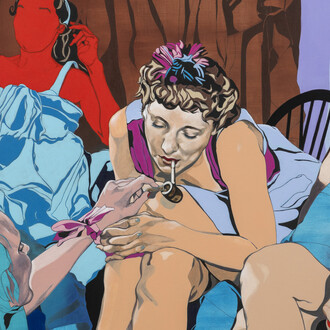The world-famous painter Rembrandt van Rijn was also a virtuoso printmaker. Sixty of his prints are displayed in the exhibition 'Virtuosity and Imagination: Rembrandt etchings from the collection'.
Together with Dürer, Piranesi, Goya and Picasso, Rembrandt was one of the greatest printmakers in the history of art. His etchings are paragons of virtuosity and imagination. They are the result of the artist’s inexhaustible urge to innovate and to push the boundaries of the medium.
Rembrandt achieved celebrity throughout Europe for his prints during his own lifetime. His contemporaries were amazed by his spontaneous and unforced use of like, his extraordinary command of light and his intensive use of dry point. Just how desirable his prints were at the time is clear from the popular name of one of his masterpieces: the Hundred Guilder Print.
Rembrandt was not yet twenty when he made his first etching. He taught himself the subtleties of the craft by trial and error, inspired by the work of his contemporaries. For him, etching was not subordinate to painting. As a printmaker, he wished to measure up to past masters such as Lucas van Leyden and Albrecht Dürer. He eventually produced an extraordinarily large oeuvre of more than 300 prints. The majority depict biblical scenes, but nearly all other genres are represented in his graphic output.
The exhibition features the sixty most beautiful and rarest prints from the collection. They include landscapes, such as Landscape with Three Gabled Cottages Beside a Road, genre scenes, portraits, self-portraits and religious tableaux, such as Saint Jerome Beside a Pollard Willow. A highlight is The Three Crosses of 1653-55, perhaps the most impressive and certainly the most experimental of all Rembrandt’s prints.
In addition to these masterpieces, the exhibition also includes several later impressions and copies, showing the full scope of the collection. For example, an impression in red ink of A Blind Hurdy-Gurdy Player and Family Receiving Alms at the Door of a House was printed not by Rembrandt himself but by a later publisher who succeeded in obtaining the original etching plates.
The vast majority of Rembrandt’s prints in the collection of Museum Boijmans Van Beuningen were gifts, the most important being from Adriaan Domela Nieuwenhuis (1923). The collection comprises more than 200 sheets, including prints by the master himself, posthumous impressions from the 17th century, reprints from the 18th and 19th centuries, copies and imitations. A large selection of these prints is now being shown as a group for the first time. The prints have been conserved and restored with the support of the Boek & Wurm Foundation.












